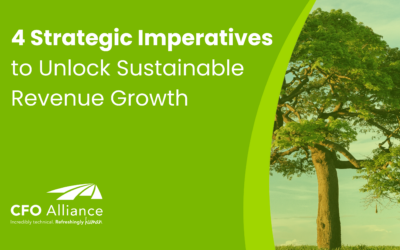Why Is It So Hard to Calculate ARR (And What Can You Do About It)?
Overall Subscription Cost Per Year + Recurring Revenue From Add-ons or Upgrades
- Why ARR Is Such a Tricky Metric to Track
- Financial Visibility: The Solution to Your ARR Problem
A consistent, growing annual recurring revenue (ARR) rate is the holy grail for SaaS startups. It’s the best way to gauge the health of your company and run it successfully. If you don’t track ARR accurately or have clear visibility into those numbers, you’ll spend lots of time and money in an effort to grow, but you won’t have good data to make informed decisions. That’s a recipe for chaos and frustration.
Knowing the details of ARR and MRR is also crucial for valuation when you’re looking to attract investors. If your long-term goal is to sell your company, you’ll need to track ARR growth including your beginning ARR, new bookings, churn, and changes to contracts in the form of up-sells and down-sells. Investors want to see these numbers going up consistently every month.
At face value, ARR is a relatively simple metric. It’s the total of your recurring revenue streams over twelve months. MRR is the month-by-month breakdown. The problem is that it’s not always as easy to track as it looks. You can’t, for example, just track your billings and come up with an accurate ARR.
Why not? Here’s an example.
Let’s say that Bob has a growing SaaS company. He’s interested in selling, and he’s been tracking his MRR in a spreadsheet. In an ideal world, Bob should be able to look at this month’s MRR and compare it to the same month last year to see whether his MRR rate is growing. He should also be able to look at ARR for last year and compare it to ARR for this year.
To do that, Bob will first need to know which revenue components qualify as recurring and which ones shouldn’t be included in the calculation. Non-recurring contract components (such as one-time fees or non-recurring professional service fees) do not contribute to ARR. Recurring services, such as a premium professional service that is maintained every year of the contract, should be included.
The problem is that Bob is calculating his MRR based on billings, and he is tracking ARR based on those MRR numbers. That makes it really easy for non-recurring revenue to slip into his calculation. It also means that if a client hasn’t been billed yet, Bob’s spreadsheet will show $0 MRR for that month and it will look like the ARR has dropped.
But that’s not accurate. The client is contracted for the month, so his data should reflect that dollar amount as MRR, even though it hasn’t been billed yet.
Compounding the problem is the fact that Bob doesn’t bill all his clients on the same frequency. Some are billed annually, others are billed quarterly, and some are billed monthly depending on the terms of their contract. Both of these factors mean that Bob’s MRR column is showing a lot of zeroes, which look like churn. But they’re not. They’re just bookings that haven’t been billed yet.
If Bob showed this spreadsheet to a potential investor, he would sink his ship before it even left the harbor.
Why ARR Is Such a Tricky Metric to Track
Where did Bob go wrong? He failed to take into account the complexity of ARR, what those numbers mean to investors, and how they are presented.
And he’s not alone. ARR is notoriously tricky. If you don’t calculate it accurately, you’ll be confused about your growth trajectory and it can undermine the valuation of your company.
Let’s look at three ways you can avoid Bob’s mistakes and get a firm grasp on your ARR:
• Clearly Differentiate MRR/ARR & Billings
What exactly gets categorized as ARR? How is ARR presented in a financial statement? How does it relate to billings? In SaaS company valuation, investors care about MRR/ARR more than billings because those numbers demonstrate the growth of your company and whether it is a sustainable business model. The problem is that many owners confuse bookings (which correlate to MRR/ARR) with billings, and that makes it impossible to get a clear picture of your financial growth.
The difference between bookings and billings is that bookings indicate future revenue based on contracts, while billings track what has already been invoiced. ARR relies on bookings to show growth and performance. Failure to differentiate these numbers correctly will send the wrong message to investors, and you’ll lose the sale.
Just as importantly, you won’t have an accurate knowledge of how well your company is performing. In turn, that means you won’t know when and where you need to make process changes that could determine the success or failure of your company.
• Implement a Good System for Tracking Everything
What tools are you using to track bookings and billings? How do those metrics relate to ARR/MRR? Like Bob and his spreadsheet, many SaaS owners are using a tracking system that isn’t serving them well. As you scale, the spreadsheet method becomes unsustainable. If that’s the case for you, then you probably know there is a problem, but you may not be able to identify it or chart a course for correcting it.
The more your company grows, the greater the urgency for a system that clearly tracks your KPIs and provides financial visibility.
• Correctly Account for Deferred Revenue
Deferred revenue is considered a liability in the valuation process because the service hasn’t been delivered yet and therefore the revenue has not been recognized. For example, if a client pays for a year’s worth of services, that revenue is considered deferred revenue until the service contract is complete. You can’t recognize all the revenue upfront; it takes place gradually over the course of the contract.
If your revenue recognition process does not maintain an accurate balance of deferred revenue, you’ll have a harder time getting through the due diligence phase of a sale.
Financial Visibility: The Solution to Your ARR Problem
The bottom line is that ARR is more complicated than it looks. It’s not something you can afford to get wrong if you are hoping to run your business effectively, scale, and eventually sell.
One way to correct this problem is to use an automated service like SaasOptics for revenue recognition. The platform is a logical transition away from spreadsheets, and it will take the guesswork out of revenue reports. It’s also an easy way to make sure your process is compliant with ASC 606 standards.
Another critical step is to view your financial management as an investment and not a back-office cost. As a growing company, your CFO is one of the most important people on your team. If you don’t have a CFO, then it’s time to consider partnering with a financial leadership team you can trust.
Get The Financial Visibility You Need
At CFO Alliance, we solve revenue problems and create financial visibility for SaaS founders like you every day. We simplify the process for you so that your numbers are accurate and you have the data you need to grow successfully.
Contact us today to find out how we can take the guesswork out of your finances!
Related Articles
The Competitive Edge: How Founders Can Cultivate Growth-Minded Teams
The Competitive Edge: How Founders Can Cultivate Growth-Minded TeamsEntrepreneurs know what it means to persist in the...
4 Strategic Imperatives to Unlock Sustainable Revenue Growth
4 Strategic Imperatives to Unlock Sustainable Revenue GrowthCreating long-term, sustainable revenue growth takes more...
Future-Proof Your Workforce with a Modern Talent Agenda
Future-Proof Your Workforce with a Modern Talent AgendaWhat does the future of talent look like? It’s a fair question,...




